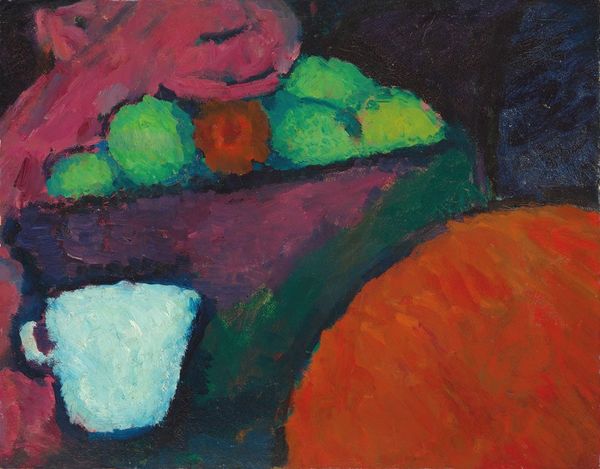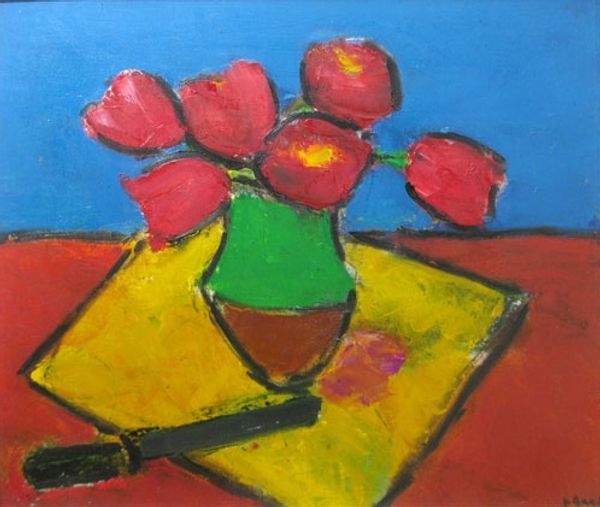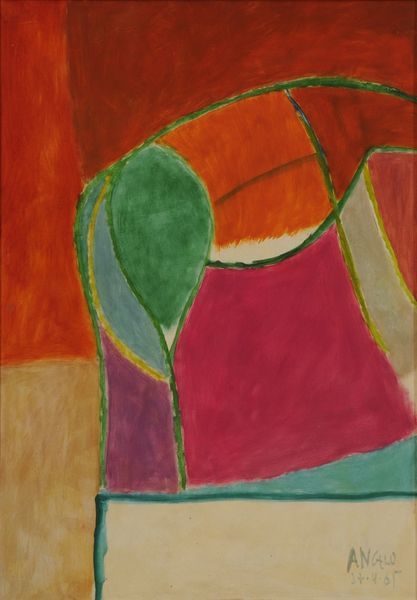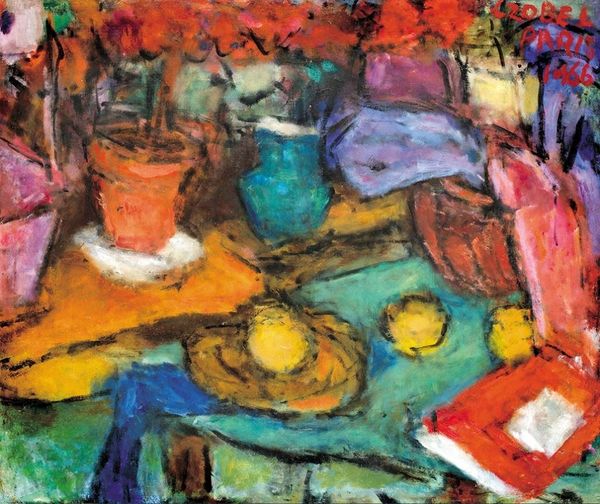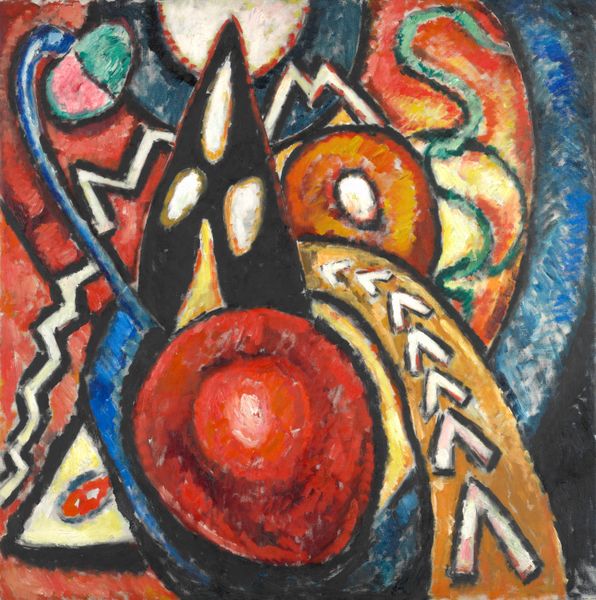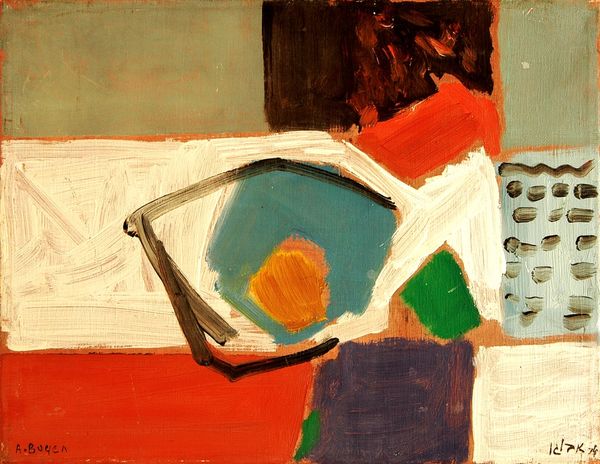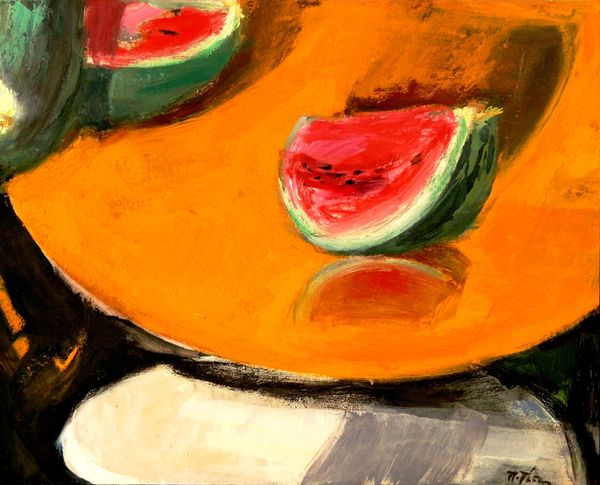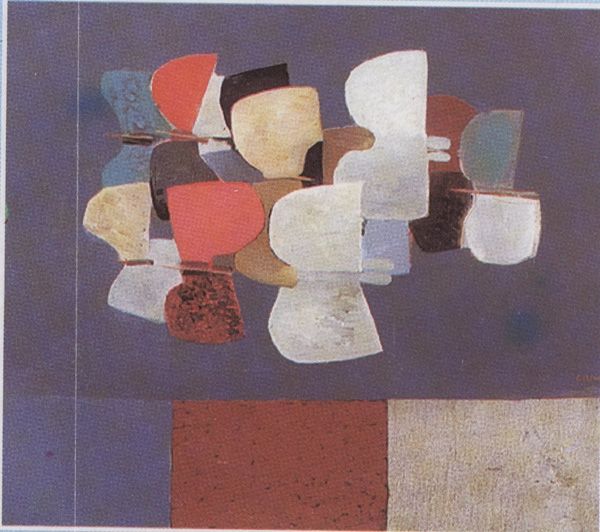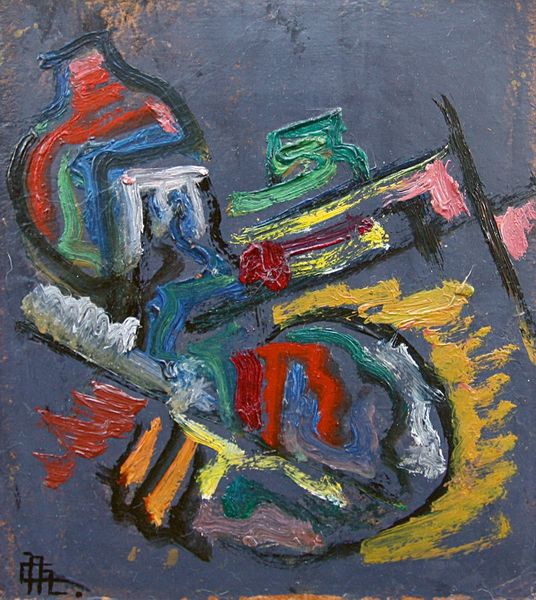
painting, acrylic-paint
#
still-life
#
fauvism
#
painting
#
acrylic-paint
#
acrylic on canvas
#
abstraction
#
modernism
Copyright: Ion Pacea,Fair Use
Curator: Before us, we have "Still Life With Tazza and Seashell" by Ion Pacea. It appears to be acrylic on canvas. The work engages with still life traditions in an intriguing modernist vein. Editor: The first thing that strikes me is the intense, almost clashing colors. That blazing orange against the black background, it really sets the objects into stark relief. And there’s this definite flattening of space. What era are we placing this in? Curator: There's no date, but with the stylistic elements we can align this to aspects of early 20th century modernism. You picked up well on the color usage; Pacea manipulates the conventions of painting here. By applying these jarring hues he creates a striking piece, which for me speaks to the shifting cultural landscape of the 20th century in Romania and its relationship to larger global currents. Editor: It feels like it could also have links to post-colonial thinking. If you consider that traditionally "high art" was preoccupied with certain academic practices, still life would reflect access to goods for certain segments of the population, and the choice of items included. Do you think there are statements about class dynamics going on? Curator: I think there's an inherent social critique that happens by deconstructing the concept of access to artistic and creative practice itself. Fauvism challenged that very notion of fine art from above. Editor: But, it's difficult to view these still lifes outside of the cultural narratives and societal conditions that shape the creation of that very painting. Even now, the art world reinforces systems of wealth and exclusivity, right? Curator: I'm less inclined to interpret the seashell through that very particular lens. From a more objective perspective I think there's a very considered method applied to its presentation. It doesn’t necessarily break with still life, it expands upon it in a novel way, wouldn’t you say? Editor: Expanding upon is a good way of framing it. The raw material nature is presented with modern interventions and interpretation. I’m glad we got to view that closely. Curator: As am I. Its treatment as raw materiality within its own artistic agency remains important.
Comments
No comments
Be the first to comment and join the conversation on the ultimate creative platform.

